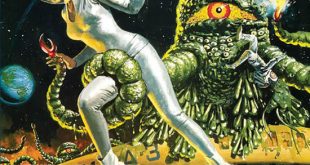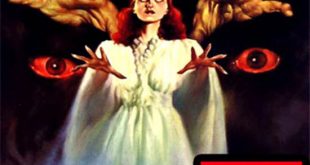SYNOPSIS:
The Congo is deep in the throes of the post-colonial Simba Rebellion. American mercenary Bruce Curry (Rod Taylor) is ordered to take a train load of Congolese soldiers to an isolated town before its overrun by the rebels. On paper he’s going there to rescue the citizens, but his real mission is to retrieve millions in diamonds before they fall into rebel hands. Along with his trusted aid Ruffo (Jim Brown) he’s forced to enlist Lt. Heinlein (Peter Carsten), an unrepentant ex-Nazi who still proudly wears his swastika. The rescue mission takes them through a hellscape of atrocities, firefights and human greed.
REVIEW:
Mercenaries may be a fascinating topic, but they haven’t gotten much quality screen time. The first mega hit mercenary film was 1978’s The Wild Geese, starring Richard Burton and Richard Harris as a crack team of hilariously over the hill, booze sodden commandos. Forty years later we have The Expendables series, featuring a crack team of over the hill, human growth hormone sodden commandos. These action epics failed to capture the violent, seedy world of soldiers for hire. But, back in 1968, Dark of the Sun actually nailed that grim world.
Dark of the Sun isn’t a horror film per say, nor is it a slam bang action funfest—it’s something else entirely. Gritty would be a gross understatement in describing this 1968 war film that Martin Scorsese and Quinten Tarantino have called their top guilty pleasures. If you’re anticipating the kind of testosterone fueled action of Tarantino’s other military favorite The Inglorious Bastards (1978) you won’t be disappointed. But you might be shocked by this film’s chainsaw battles, graphic torture, child murders and gang rape of both men and women. Audiences in 1968 watched Dark of the Sun in slack jawed horror, until mass condemnation by movie critics forced MGM to shelve it. Only a year later Sam Peckinpah’s The Wild Bunch would be declared the most violent film produced by a major studio, but Dark of the Sun beat it to the punch.
Don’t mistake this for some seedy exploitation movie wallowing in gore and human suffering. Dark of the Sun is a top-notch marriage of action and suspense with a solid script (based on Wilbur Smith’s 1965 novel) and great performances, all set against the, then timely, backdrop of the Congo Crisis.
Director Jack Cardiff was a respected cinematographer who’d shot for legends like Alfred Hitchcock and John Huston. Clearly, he learned a lot from those masters. Moments like the aerial attack on the relief train (ironically by UN Peacekeepers) are taut and exciting. But Cardiff’s smartest directorial move comes at the twenty-minute mark when ex-Nazi Lt. Heinlein mercilessly guns down a pair of children he suspects might reveal their position. This brutality comes completely out of left field, declaring to audiences that this ain’t no John Wayne war movie—nothing’s sacred and nobody’s safe. In a later scene one of the relief train’s passenger cars breaks loose and is sent rolling back into the now Simba occupied town. In any other movie our heroes would employ some last second heroics to save them. In this film it just rolls away. You can’t help but wince, knowing what awaits all those screaming women and children.
The film’s darkest passage comes when Curry and Ruffo must slip back into the Simba occupied town to recover the lost diamonds. Cardiff masterfully gives us short, hellish glimpses of the torture, rape and murder in progress. Amazingly, our two heroes remain unphased by this nightmare, which includes one of their own men being gang raped. Their callousness reaches its apex during their escape, when they wantonly machine-gun attackers and victims alike.
These flawed characters are one of the film’s other strengths. Australian actor Rod Taylor is great as Curry, the weather-beaten soldier of fortune barely clinging to his humanity. Taylor was an underrated actor who, by 1968, was in the twilight of his leading man days. But that middle aged, “rode hard and put away wet,” countenance perfectly embodies Curry. Fun fact—Taylor was a virtual shoe in for the role of James Bond, but refused to read for the part. Ex-football star Jim Brown, (12,000 rushing yards!) would eventually reach stardom in blaxploitation films like Slaughter (1972) and Three the Hard Way (1974). But this earlier performance as Ruffo proves he was capable of much more. As usual his action scenes are great, but he truly shines in his quiet, reflective moments. Peter Carsten is chilling as the devious ex-Nazi, a character based on real life Wehrmacht officer, turned Congo mercenary, Siegfried Muller. Even Yvette Mimieux proves she possessed acting muscles nobody let her flex afterwards.
Dark of the Sun isn’t perfect—there are moments that could be deemed racially insensitive. Also, its ninety plus minutes of savagery and bleakness might be too intense for some viewers. But, after all that horror, there’s a glimpse of light at the end of the tunnel. Surprisingly, it comes from corporal Kataki (Bloke Modisane), a seemingly minor character, who, in a brief bit of dialogue proves there’s hope for the future of the Congo, and humanity.
Dark of the Sun also sported one of cinema’s all-time great movie posters, with artwork torn straight from the cover of a Men’s Adventure magazine. Fortunately, the movie actually lives up to the poster’s promise. And finally, if you ever want to read some genuine horror spend a few hours studying the Congo’s colonial history. You’ll never look at innocent, chocolate making Belgium the same way again.
The Congo is deep in the throes of the post-colonial Simba Rebellion. American mercenary Bruce Curry (Rod Taylor) is ordered to take a train load of Congolese soldiers to an isolated town before its overrun by the rebels. On paper he’s going there to rescue the citizens, but his real mission is to retrieve millions in diamonds before they fall into rebel hands. Along with his trusted aid Ruffo (Jim Brown) he’s forced to enlist Lt. Heinlein (Peter Carsten), an unrepentant ex-Nazi who still proudly wears his swastika. The rescue mission takes them through a hellscape of atrocities, firefights and human greed.
 Horror News | HNN Official Site | Horror Movies,Trailers, Reviews
Horror News | HNN Official Site | Horror Movies,Trailers, Reviews













